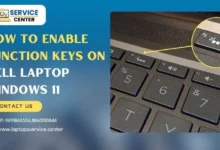How to Turn On Camera on Windows 11 Laptop

In the digital age, our laptops serve as portals to the world around us. A functional camera is crucial, whether for virtual meetings, capturing memories, or attending online classes. With the advent of Windows 11, Microsoft has introduced several exciting features, including enhancements to the camera functionality. In this comprehensive guide, we’ll delve into the step-by-step process of turn on camera on Windows 11 laptop, ensuring you’re ready to capture moments and engage in virtual interactions effortlessly.
Understanding the Importance of Camera Activation on Windows 11:
Before we delve into the intricacies of turning on the camera, we must grasp why this feature matters. In today’s interconnected world, visual communication has become increasingly prevalent. Whether participating in video conferences, attending virtual events, or simply connecting with loved ones, having a functional camera is indispensable. Windows 11 recognizes this need and offers intuitive ways to activate your camera, empowering users to engage seamlessly in the digital realm.
Common Causes for Camera Not Activating on Windows 11 Laptop
1. Privacy Settings: Windows 11 prioritizes user privacy, often leading to camera access being disabled by default. To check this, navigate to Settings > Privacy & security > Camera, and ensure the toggle switch is turned on.
2. Outdated Drivers: Incompatibility between device drivers and the Windows 11 system can hinder camera functionality. Update your drivers through Device Manager or visit the manufacturer’s website for the latest versions.
3. Hardware Issues: Physical damage or malfunctioning hardware components can prevent the camera from activating. Ensure the camera is securely connected, and consider seeking professional assistance.
4. Software Conflicts: Certain applications may interfere with the camera’s operation. Close any unnecessary programs running in the background and try reaccessing the camera.
5. System Updates: Sometimes, bugs or glitches introduced in system updates can affect camera functionality. Stay updated with the latest Windows 11 patches and bug fixes to mitigate such issues.
Step-by-Step Guide to Turn On Camera on Windows 11 Laptop
Check Privacy Settings: Begin by navigating to the Windows 11 settings menu. Click on “Privacy & Security” and select “Camera” from the left-hand menu.
Ensure the toggle switch under “Allow apps to access your camera” is turned on. Additionally, scroll down to “Choose which Microsoft Store apps can access your camera” and toggle on the apps you wish to grant camera access.
Update Camera Drivers: Outdated or incompatible camera drivers can hinder its functionality. To update the drivers, right-click the Start button and select “Device Manager.” Expand the “Cameras” or “Imaging devices” category, right-click on your camera device, and select “Update driver.” Follow the on-screen instructions to complete the driver update process.
Enable Camera in Device Manager: Sometimes, the camera may be turned off in Device Manager, preventing it from functioning. To enable it, open Device Manager, locate your camera device under the “Cameras” or “Imaging devices” category, right-click on it, and select “Enable Camera device.”
Check Physical Switch or Function Key: Some laptops feature a physical switch or function key (e.g., Fn + F6) to toggle the camera on/off. Ensure the physical switch is in the “on” position or press the designated function key combination to activate the camera.
Restart Windows Camera Service: Press Win + R to open the Run dialog box, type “services. msc,” and press Enter. In the Services window, locate the “Windows Camera Frame Service,” right-click on it, and select “Restart.” This action can help resolve any underlying issues with the camera service.
Run Hardware Troubleshooter: Windows 11 offers built-in troubleshooting tools to diagnose and fix hardware-related issues. Open Settings, navigate to “System,” and select “Troubleshoot.” Click on “Other troubleshooters,” then “Run” under “Hardware and Devices.” Follow the on-screen instructions to run the hardware troubleshooter and resolve any detected issues.
Read More: How to Fix Dell Laptop Camera Not Working Issue: Troubleshooting Guide
Additional Tips for Optimizing Camera Performance on Windows 11:
– Keep Your Drivers Updated:
Device drivers, including the camera, play a crucial role in ensuring optimal hardware performance. Periodically check for driver updates through the Device Manager or utilize third-party software to automate the process.
– Adjust Camera Settings:
Most camera apps offer a range of settings that allow you to adjust parameters such as brightness, contrast, and resolution. Experiment with these settings to achieve the desired image quality that fits your needs.
– Consider Privacy Filters:
If privacy is a concern, consider investing in physical camera covers or privacy filters that can be attached to your laptop’s camera. These accessories provide an additional layer of security by physically blocking the camera lens when not in use.
– Explore Built-in Camera Features:
Windows 11 introduces new features and enhancements to the camera app, such as improved facial recognition and augmented reality (AR) effects. Take some time to explore these built-in features to discover creative ways to enhance your camera experience.
Conclusion:
Activating the camera on your Windows 11 laptop is a straightforward process that unlocks a world of possibilities, from virtual meetings to creative expression. Following the step-by-step guide outlined in this comprehensive tutorial, you can ensure your camera is ready to capture moments and facilitate seamless communication in the digital realm. Embrace the power of visual communication and make the most of your Windows 11 device’s camera functionality.
FAQs: Frequently Asked Questions
1. How do I turn on my camera on a Windows 11 laptop?
To turn on your camera on a Windows 11 laptop, click on the Start button, then select “Settings” (the gear icon). In the Settings window, choose “Privacy & Security” and then “Camera” from the left-hand menu. Ensure that the toggle switch under “Allow apps to access your camera” is turned on.
2. Why can’t I find my camera settings on Windows 11?
If you cannot locate your camera settings on Windows 11, try searching for “Camera” in the search bar next to the Start button. Alternatively, you can access camera settings through the Settings app by clicking Start and selecting Settings > Privacy & Security > Camera.
3. How can I test whether my camera works on Windows 11?
To test if your camera works on Windows 11, open the Camera app from the Start menu or search “Camera” in the search bar. You should see a live preview of your surroundings if your camera functions correctly. If not, ensure the camera is correctly connected and that any physical camera switches are turned on.
4. My camera still needs to be fixed after following the steps. What should I do?
If your camera is still not working after following the steps, there may be a hardware or driver issue. First, ensure that your laptop’s camera drivers are up to date by visiting the manufacturer’s website or using Windows Update. If the problem persists, try restarting your computer or running the built-in troubleshooter by going to Settings > Update & Security > Troubleshoot > Additional troubleshooters > Camera.
5. How do I grant camera access to specific apps on Windows 11?
To grant camera access to specific apps on Windows 11, go to Settings > Privacy & Security > Camera. Under “Choose which Microsoft Store apps can access your camera,” you can toggle on or off access for individual apps. Additionally, you can manage camera permissions for desktop apps by scrolling down and using the “Allow desktop apps to access your camera” toggle switch.







